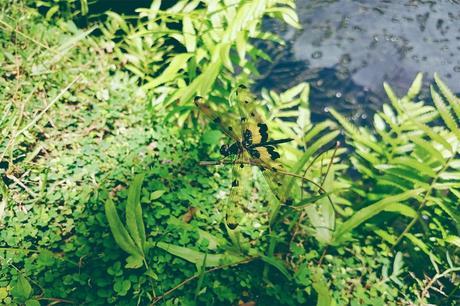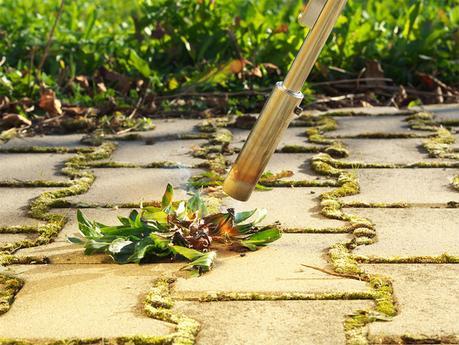
People love taking care of their gardens, so it's no wonder they get riled up when common lawn weeds sprout out of nowhere. From dandelions to large crabgrass and Canada thistle, people are faced with an alarming amount of weeds in their gardens. It's as if they magically appear regardless of what gardeners do as preventive measures. Still, this does not mean that all hope is lost. Here, we've gathered the most efficient forms of weed control.
Practical Weed Control Strategies
One of the best ways to deal with garden weeds is by placing plants close to each other. In contrast to scattered planting, the close proximity reduces the chances of weeds appearing. This is effective simply because close plants reduce the area of soil exposed to sunlight. It can be appealing to give a wide space between plants, but gardeners can actually go as far as cutting a quarter of the suggested space.
A second tip when it comes to removing common lawn weeds is by utilizing the right tools. See, taking them out by hand is alright, but it can get tiresome. Gardening equipment helps get the work done efficiently. For example, a winged weeder works best for pulling out deep-rooted garden weeds. It still requires quite some time, but such a tool guarantees complete removal. On the other hand, a standard garden hoe works perfectly for dealing with shallow-rooted varieties.
Taking Advantage of Mulch
Apart from tight spacing strategies and acquiring the right equipment, mulching also does wonders to one's garden. Basically, mulching maintains a cool soil temperature to discourage weeds from appearing. Just like close-spaced plants, mulching also stops sunlight from reaching greater portions of the soil. However, it's important for gardeners to conduct mulching appropriately as this can backfire. There are three factors that keep mulching effective in weed control: space, material, and depth. Pay strict attention to the areas still exposed to light and cover them as soon as possible. Moreover, make sure that the material used for the mulch does not contain any weed seeds. Regularly check the mulch since weed seeds can land due to wind and birds. Third, the mulch should be two inches deep at most. Otherwise, the soil cannot be replenished with enough oxygen.
Tolerating Weed Seeds Underneath
This might sound against the goal of keeping weeds out of the garden, but it has to be understood that not all weed seeds can wreak havoc. In particular, weed seeds that are more than two inches deep under the soil are unlikely to grow. So if one were to constantly dig the soil, a gardener can bring up more weed seeds near the surface and accidentally cause their germination. It is really important to ensure that each digging has a clear purpose and it is not constantly conducted.
A good way to manage garden soil without unintentionally moving weed seeds is by using a knife. Instead of pulling off weeds by hand, a person can cut the roots with a knife to permanently remove the possibility of germination.
Using Landscape Fabric
If things seem to be getting out of hand constantly, perhaps it's time to use landscape fabric. A lengthy piece of this fabric can effectively prevent selected areas from being exposed to the sun. In other words, weeds are unable to grow while keeping the soil healthy with enough air and water. A gardener can also cut parts of the landscape fabric if one desires to place plants within the area occupied by the material. What's best about using landscape fabric is that it's easy to adjust its size and even take irregular shapes.
Of course, there are people who are against using landscape fabric. Some have observed that using it keeps earthworms away from keeping the soil filled with nutrients. With the fabric, earthworms cannot find enough compost to consume and they are incapable of occasionally appearing out of the soil. Furthermore, there are issues when the roots of common lawn weeds get tangled around the landscape fabric. Just like mulching, this method can backfire if a gardener does not regularly check for the appearance of weed seeds and the accumulation of roots.

Going for Chemicals
This is not always the solution to common lawn weeds, but it can be performed if there are no other options. If the weeds have spread too much around the garden and removing them either by hand or even with tools has become too much of a hassle, chemical weed killers are a good choice. A gardener simply has to spray the chemical product on the weeds to kill them off. It would be best to use a backpack sprayer for large space. The results can be quick - all it usually takes is a day or two. Once the weeds have died, a gardener just has to manually remove them from the area.
Then again, chemical weed killers have issues like landscape fabric. The first one is that it is not good for the environment. Many people understandably want weed control strategies to utilize only organic materials. Second, the chemical spray only affects those that it has direct contact with. Likewise, insufficient spraying can keep the weed alive.
Unusual Materials
Apart from the aforementioned strategies, there are solutions that seem quite strange. Instead of using chemical weed killers, there are people who recommend apple cider vinegar to get rid of dandelions. Basically, one simply has to pour some vinegar in the center of each flower and spray more just beside the plant stem near the ground. The downside to this is that rain will require another dosage of vinegar to each plant.
Another common product that seems to work against common lawn seeds is salt. In particular, salt does wonders in getting rid of weeds that grow between walkways. A gardener has to boil a cup of salt with two cups of water to create the desired solution. This can then be immediately poured onto the weeds. Unlike with using apple cider vinegar, the rain can actually help salt. If it's raining, a gardener can directly pour the salt and let the rain combine with it to kill off the weeds.
As stated, there are many to get rid of weeds in the garden. One simply has to be careful in applying them to get the desired results.
